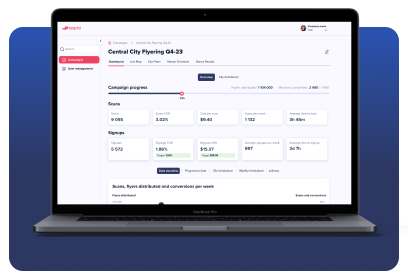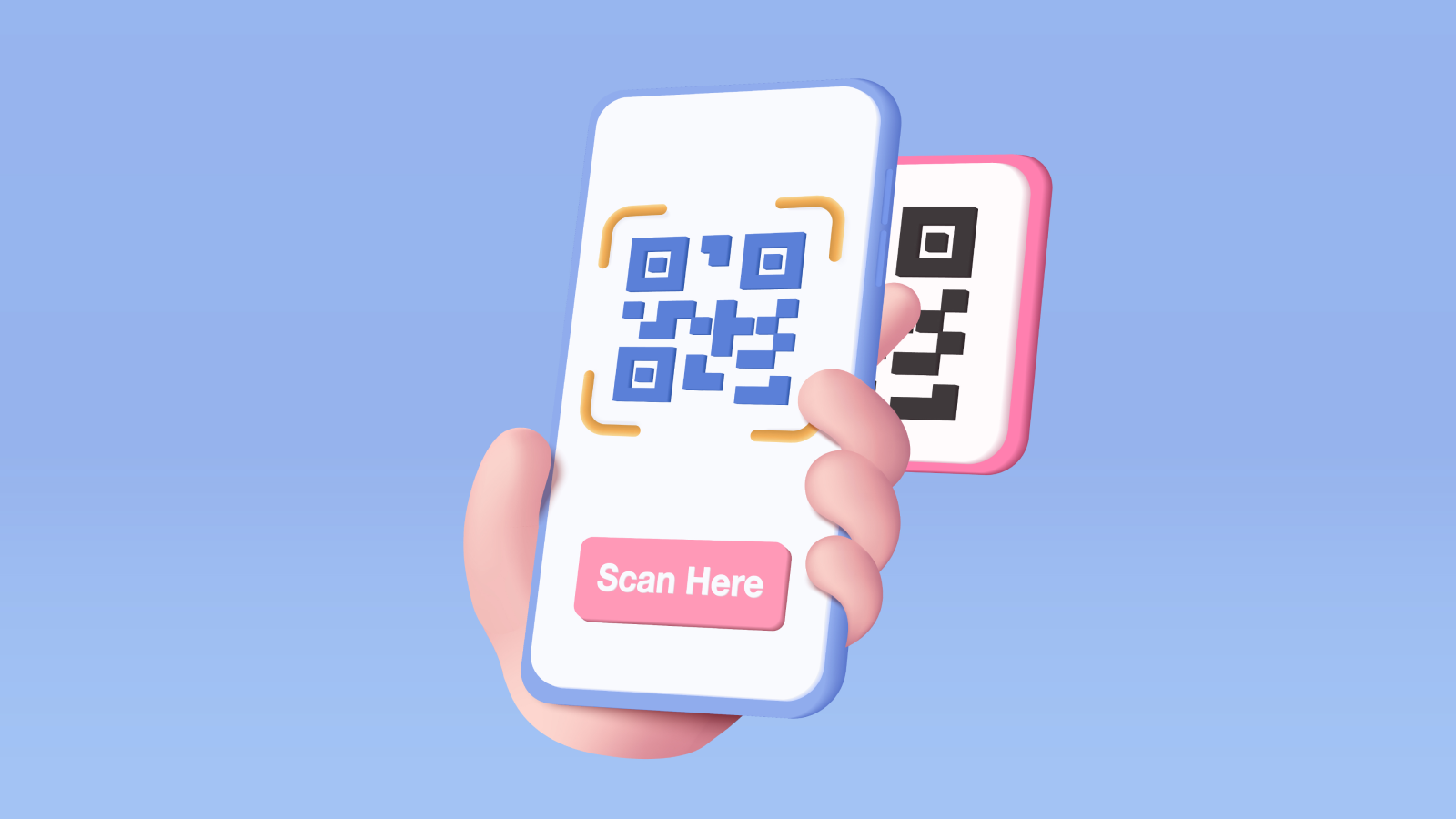
Programmatic Direct Mail for Personalized Outreach
Programmatic direct mail is a cutting-edge marketing strategy that combines the precision of digital advertising with the tangible impact of traditional mail. Unlike conventional direct mail, which often involves sending mass mailings to a broad audience, programmatic direct mail uses automation technology to deliver personalized content directly to potential customers.
With this technology, businesses are able to easily align their mail ads with customer behaviors and preferences, save time and resources, and ensure a higher likelihood of response.
In this blog, we’ll dive into the uses and benefits of programmatic direct mail, exploring how it works, why it matters, and how it can elevate your marketing strategy.
How Does Programmatic Direct Mail Work?
The power of programmatic direct mail (PDM) lies in data and automation, and it can largely depend on the direct mail provider you choose (like Oppizi). Here’s a step-by-step look at how the process typically works:

1. Data Collection
Using data-capturing tools like HubSpot and Shopify, companies gather data from multiple sources, such as:
- Website activity
- Pages visited
- Time spent on page
- Store visits
- CRM systems
- Purchase history
This data is used to create detailed customer profiles, tracking key events like abandoned carts, website visits, or sign-ups.
2. Audience Segmentation
Once the data is collected, marketers use it to segment their audience into specific groups based on behaviors, demographics, and interests. This segmentation ensures that every mailing is personalized for maximum impact.
For example, you can create segments based on purchase history, identifying frequent shoppers or those who have abandoned their carts, and tailor your message accordingly. You may also consider segmenting by geographic location, spending habits, or engagement levels, helping you prioritize high-value customers and optimize your marketing budget.
These insights allow for hyper-targeted campaigns that increase conversion rates and improve ROI by only spending on relevant, high-intent prospects.
3. Automated Triggering
With triggers set up based on customer actions, mailings are automatically sent out without the need for manual scheduling. For instance, if a customer abandons their cart, a customized mailer with a special offer may be generated and sent within a short time frame to encourage purchase completion.

4. Personalization
The content of each mail piece is tailored to the recipient, making the message more relevant and compelling. This might include personalized offers, images, or product recommendations based on past interactions.
5. Delivery & Tracking
The mail is printed, sent, and tracked for delivery, providing insights into when and how recipients engage with it. This data can then be analyzed to optimize future campaigns.
Oppizi, for example, partners with printing facilities to secure optimal pricing and mailer format compliance. When a trigger occurs, the system automatically coordinates with a local printer to handle production and USPS delivery.
Discover how Oppizi’s programmatic direct mail solution makes it easy to automate custom mail campaigns for maximum impact.
3 Key Benefits of Programmatic Direct Mail
Let’s take a look at some of the main benefits of programmatic direct mail that make it a game-changer for marketers looking to drive engagement and ROI.
Precision Targeting
Programmatic direct mail uses real-time data to pinpoint the exact moment a customer is most likely to be receptive to marketing. For example, if a customer cancels a subscription, a targeted mailer offering a discount to rejoin can be sent immediately, increasing the chance of re-engagement.

This allows marketers to send hyper-targeted mailings that are more relevant and engaging, leading to higher response rates and a better overall customer experience. In fact, a whitepaper created by WARC found that direct mail has an average engagement rate of 95%.
Integrates with Digital Campaigns
One of the standout features of programmatic direct mail is its ability to seamlessly complement digital marketing efforts. When a potential customer interacts with a brand online—like visiting a product page, for example—a programmatic direct mail piece can be triggered to follow up in a highly personalized way.
This often works in tandem with email, social media, and digital ads to create a cohesive, omnichannel experience. Platforms like Salesforce and HubSpot facilitate this integration, making it possible to automate direct mail campaigns within HubSpot based on user behavior, such as specific page visits.
Increased ROI
Programmatic direct mail boasts a higher return on investment compared to traditional direct mail. Its efficiency lies in targeting the right audience with the right message at the right time. The personalization and data-driven approach reduce waste and improve conversion rates, leading to better marketing outcomes and increased profitability.
In fact, WARC’s direct mail whitepaper found that when direct mail takes the lead in a campaign, it results in a 27 percent ROI, compared to 23 percent for other marketing strategies.

Programmatic Direct Mail vs. Traditional Direct Mail
When comparing programmatic direct mail to traditional direct mail, the differences are striking:
- Real-Time Automation: Traditional direct mail often requires manual processes, from list selection to printing and mailing. In contrast, programmatic direct mail is fully automated, using real-time data to send personalized mailings at scale.
- Data Integration: While traditional direct mail uses static lists, programmatic direct mail integrates with CRM and marketing platforms to continuously update and refine mailing lists based on user behavior and data insights.
- Scalability: Programmatic campaigns are highly scalable and can be adjusted in real time, whereas traditional mailings often require long lead times and are less flexible.
- Enhanced Targeting: Programmatic direct mail leverages advanced data analysis to target individuals more precisely, ensuring that messages are highly relevant to the recipient’s interests and actions. Traditional methods often rely on broader, less personalized approaches.
- Higher Engagement: Personalized and timely mailings in programmatic campaigns result in higher engagement rates compared to traditional mailings, which may be less relevant or timely for the recipient.
- Cost Efficiency: By automating processes and targeting only high-value prospects, programmatic direct mail can reduce waste and optimize marketing budgets, unlike traditional mail, which often involves higher costs due to manual labor and bulk distribution.
Overall, programmatic direct mail is more efficient, scalable, and cost-effective, making it ideal for marketers looking to optimize their direct mail efforts.
When to Use Programmatic Direct Mail

Abandoned Cart Recovery
Imagine that a customer browses your online store, adds items to their cart, but leaves without making a purchase. With programmatic direct mail, an automated mailer with a special offer or reminder can be sent to encourage them to complete the transaction. This personalized follow-up can significantly boost conversion rates.
Customer Retargeting
Programmatic direct mail is an excellent way to re-engage visitors who showed interest but did not convert. For example, if a user frequently visits a product page, a personalized mail piece highlighting the product’s features can be sent, increasing the chances of turning interest into action.
Customer Retention and Upselling
Nurturing existing customer relationships is crucial for long-term success. Programmatic direct mail can be used to send personalized offers, loyalty rewards, or product recommendations based on past purchases, encouraging repeat business and upselling opportunities.
Win-Back Campaigns for Lapsed Customers
Re-engaging customers who have stopped interacting with your brand can be challenging, but programmatic direct mail can help. A well-crafted mailer featuring a compelling offer, a personalized message, or an update on new products can reignite interest and bring lapsed customers back into the fold.
Onboarding New Customers
Programmatic direct mail can be part of a comprehensive onboarding strategy. Sending new customers a welcome mailer that includes helpful information about their recent purchase, how to get started, or exclusive perks can set a positive tone and improve engagement from the outset.
Subscription Renewals
Keeping track of subscription timelines is vital for retaining customers. With programmatic direct mail, you can automatically send reminders about upcoming renewals, offering discounts or additional incentives to encourage customers to extend their subscriptions and remain loyal to your brand.
Combining Programmatic Direct Mail with Other Channels
Combining programmatic direct mail with other marketing channels can create an integrated approach that amplifies reach and engagement while enhancing personalization and conversion rates. Here’s how it pairs well with various channels:
Flyering

- Why Combine with PDM: Flyering is a physical, highly visible channel that drives local engagement. When combined with PDM, the impact of both mediums increases by creating a memorable offline experience. Flyers can serve as an initial touchpoint, while PDM follows up with personalized mail to nurture leads.
- Example Strategy: Distribute flyers in targeted neighborhoods, then use PDM to send customized mailers to the same areas. Include offers or incentives that tie back to the original flyer.
Out-of-Home (OOH) Ads
- Why Combine with PDM: OOH ads, such as billboards or transit ads, are effective for brand awareness. When followed by a personalized piece of direct mail, consumers are more likely to recall the brand and take action.
- Example Strategy: Run OOH campaigns in high-traffic areas where your target audience is likely to be. Collect data from OOH interactions (e.g., through QR codes) and use PDM to follow up with a customized message or offer.
Digital Ads (Retargeting)
- Why Combine with PDM: Digital ads can retarget users who’ve engaged with your brand online. Combining this with PDM reinforces your message both digitally and physically, leading to higher conversion rates.
- Example Strategy: Use website behavior (e.g., abandoned carts or visits to a specific page) to trigger both digital retargeting ads and personalized direct mail. This dual approach can gently push consumers through the sales funnel.
Email Marketing
- Why Combine with PDM: Email marketing is an excellent way to deliver quick updates and promotions, but emails are easily overlooked. PDM can follow up with a more tactile experience to grab attention.
- Example Strategy: Send an email introducing a new product or event, then follow up with PDM that includes a unique code or special offer, creating an omnichannel experience that boosts engagement.
Social Media Marketing
- Why Combine with PDM: Social media is ideal for creating brand awareness and community engagement. Using social media insights, you can tailor your PDM for more relevant, timely outreach.
- Example Strategy: Launch a social media campaign to drive initial interest, then follow up with PDM that reinforces the campaign message and provides additional value, such as exclusive offers or event invitations.
Programmatic Direct Mail FAQs
What Can You Use as a Trigger?
Triggers for programmatic direct mail are often based on specific customer actions or data points, such as website visits, cart abandonments, or demographic shifts. These signals can be pulled from your CRM or website analytics to ensure mailers are sent at the right moment. The goal is to align the mailpiece with a key point in the customer journey to maximize engagement.
How Can You Track Responses?
You can track responses to programmatic direct mail using unique URLs, personalized QR codes, or promo codes that link back to your marketing platforms. Integrating these tracking tools makes it possible to track conversions and attribute offline actions to your direct mail efforts. Platforms like Oppizi enhance this process with a comprehensive dashboard that consolidates key metrics, including QR code scans and conversion rates.
What is Programmatic vs. Automated Direct Mail?
Programmatic direct mail uses data-driven triggers to send personalized mail in real-time, often integrated seamlessly with digital marketing efforts. In contrast, automated direct mail involves pre-set, rule-based campaigns that are less responsive to live customer behaviors.
Get Started with Programmatic Direct Mail
By following these steps, brands can harness the full potential of programmatic direct mail to drive engagement, conversions, and long-term customer loyalty.
With its unique blend of data-driven precision and tangible impact, programmatic direct mail is transforming marketing by offering an innovative way to connect with consumers and deliver results.Ready to elevate your marketing?
Create a powerful direct mail campaign with Oppizi today and reach your audience when it matters most!

About Oppizi
Oppizi is on a mission to disrupt offline marketing at scale by offering offline marketing solutions that co-exisst with digital channels and providing businesses with MarTech solution that resonate with audiences across various touchpoints.





